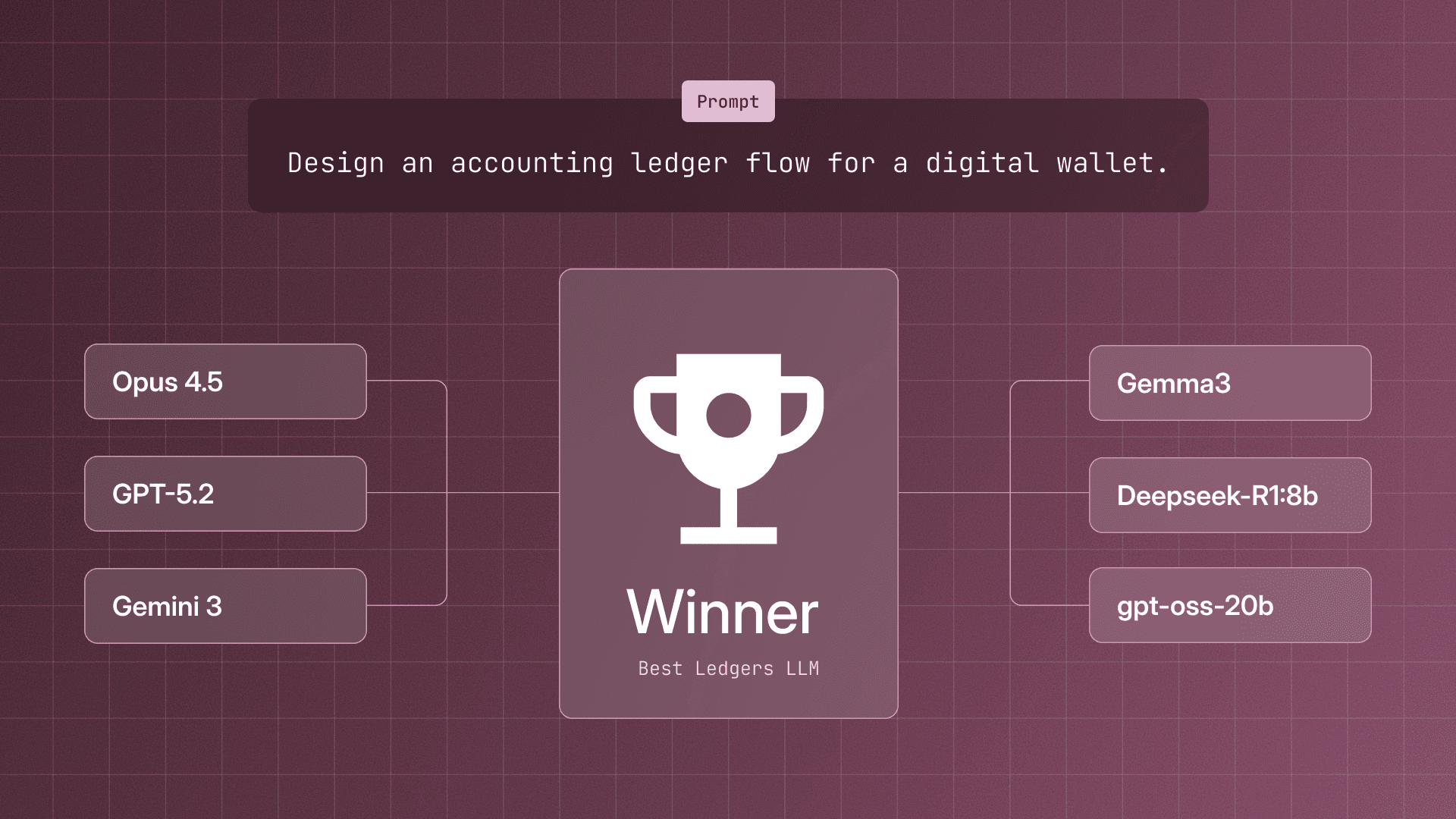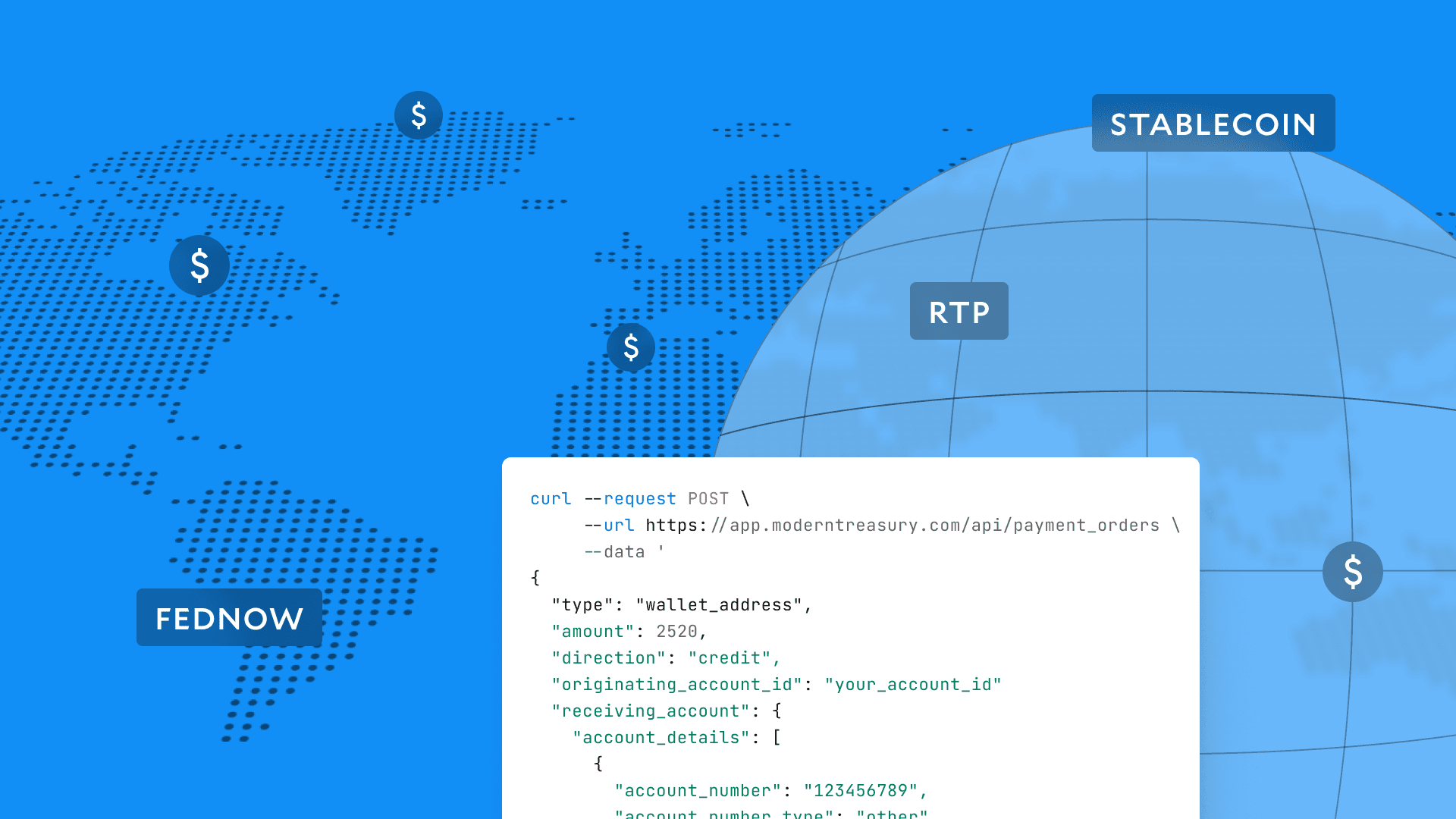Modern Treasury and Paxos Make It Easier for Businesses to Move Money with Stablecoins.Learn more →
The Promise of Continuous Accounting
In November, we released functionality that allows Modern Treasury to connect with general ledger systems in real-time and introduced it as a class of features called Continuous Accounting.

In November, we released functionality that allows Modern Treasury to connect with general ledger systems in real-time and introduced it as a class of features called Continuous Accounting. We’ve now expanded support from QuickBooks to NetSuite with the open-source library LedgerSync. In this post, I want to share why we believe Continuous Accounting is so promising, and why we are investing so heavily in it.
Management teams and investors need a clear understanding of business fundamentals in order to make good decisions. When companies run into trouble, it is often because a financial issue is left unnoticed and unresolved until it is too late. When an external crisis hits, such as with the recent economic shocks brought about by the COVID pandemic, companies have an even shorter timeline to make decisions and need to be able to rapidly react, ideally relying on the best, most up-to-date data.
Yet the tools of payments, finance, and corporate governance are too often limited by batch processes. Batch processes are central to how computers work, in which computers work through a given set of tasks at a regular and predefined interval. These batch processes happen in many places, but it is worth walking through a few examples:
- At the lowest level of a single payment, the ACH system is itself a batch system. Banks receive daily batch files, process them overnight, and return daily files the next morning.
- At the operating level, the payment operations teams deal with batches when they process daily “payment runs” out of ERP systems and upload those to the bank. Someone takes all the approved invoices for that day, and sends them to the bank to process at once.
- At a management level, economic activity is reported on a monthly basis after a manual month close process handling the “batch” of one month at a time.
- Finally, at a corporate governance level, companies report to investors in batches of quarters (in 10-Q statements) or years (10-K).
Modern APIs work in real-time: instead of a daily batch, data can stream continuously throughout the day. With modern APIs, it is possible to have every single payment, when first originated, carry with it the accounting treatment that the payment should receive when it is successfully executed. For example, using accounting categories, Modern Treasury can reconcile credits or debits on a bank statement and immediately sync it with a company’s General Ledger. To walk through the four batch levels above:
- Instead of a batch ACH file, Real Time Payments happen 24/7/365 and settle in real time.
- At an operating level, instead of handling daily payment runs from an ERP, an API handles each payment individually as it happens.
- At a management level, accounting software can produce real-time reports true to the status of all payments rather than having to rely on a manual monthly close.
- Finally, at a corporate level, rather than having books reported once a quarter or once a year, there can be a live dashboard showing the real-time status of a business. At Modern Treasury, we often call that vision the “instant 10-K.”
With modern APIs and cloud connectivity, old batch processes will be replaced with continuously streamed payments data that are booked as they happen.
As this transition occurs, some systems can remain batch-based while others move to real-time. For example, a company such as Uber or Lyft can use ACH for corporate expenses but make driver payouts in real-time.
These systems need not switch in lockstep. For example, Great Britain introduced the Faster Payments Service in 2008, and the British version of ACH, known as BACS, still had almost three times the volume that Faster Payments did ten years later. [1] The systems to initiate, reconcile, and book transactions can move to real-time even while some of the underlying systems remain batch processes.
The promise of this transition to real-time payments is that companies will have better, more up-to-date data at all levels of the organization. This enables better decision making, complete transparency, and greater trust throughout the system. This is not the status quo for accounting today. Much of an accounting professional’s time is spent double checking on payments, following up on past invoices or expense reports, and auditing after the fact to ensure accuracy. It doesn’t need to be that way. With great software, accounting can be made more sound, more efficient—and perhaps most importantly, more trustworthy.




